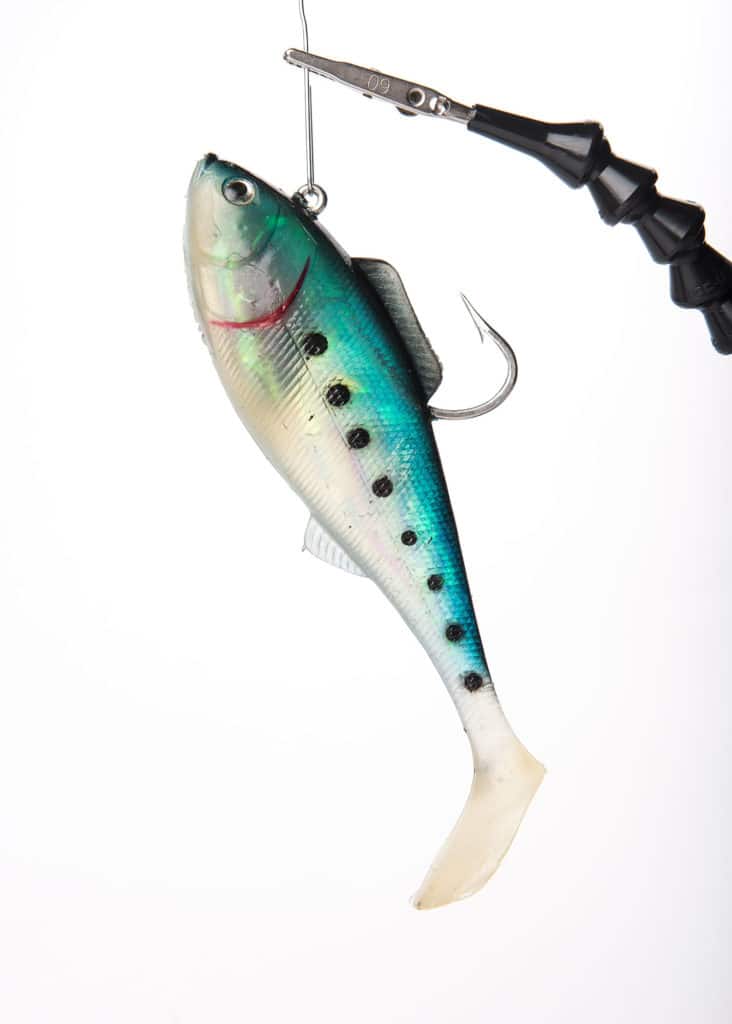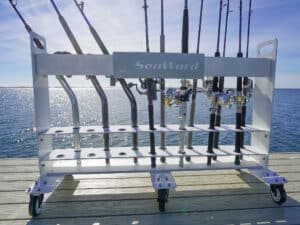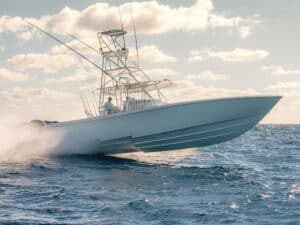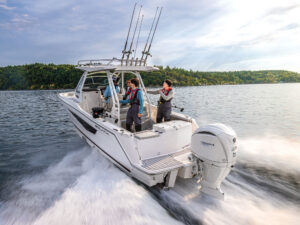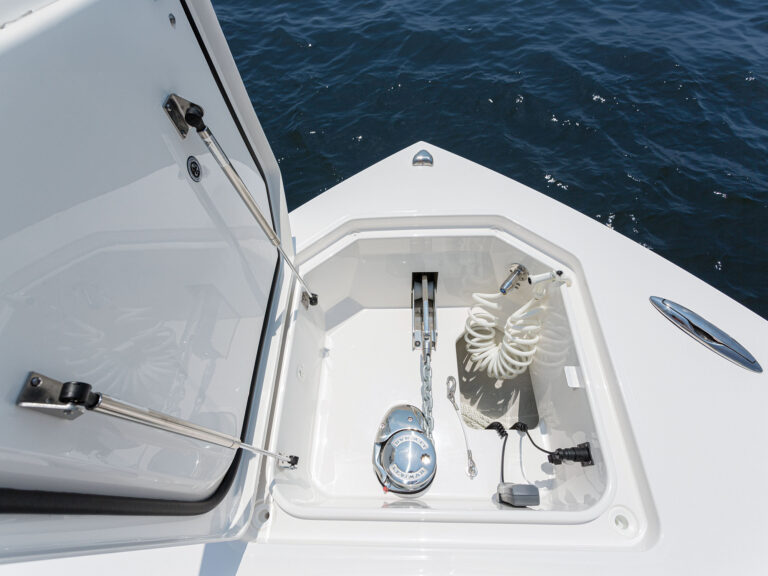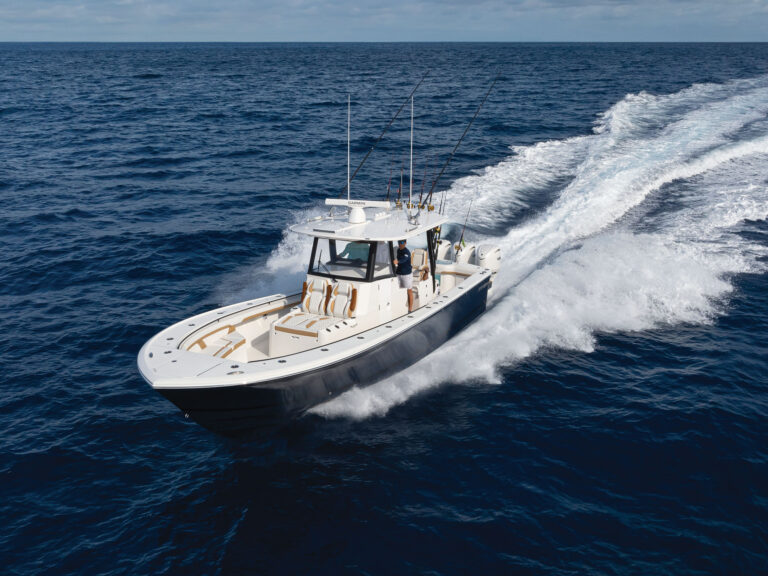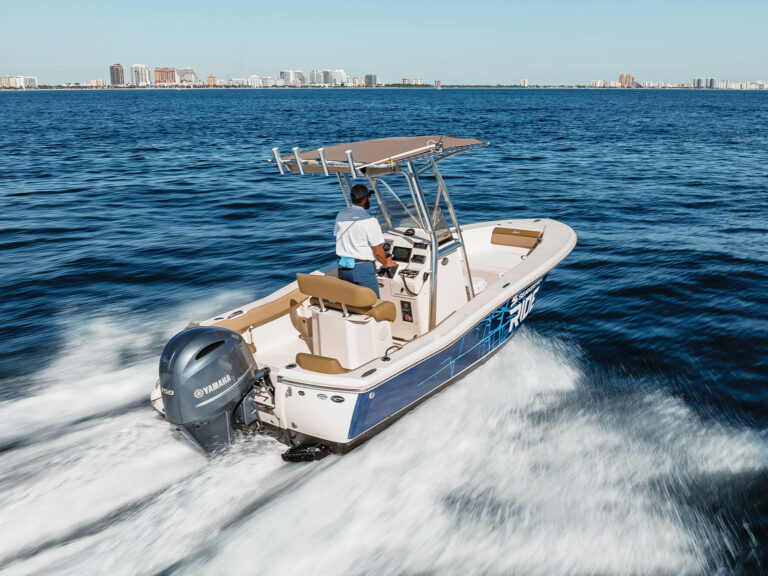
Sunny Delight: Sight-casting and trolling produce best during bright, sunny conditions.
Full Moon: The best bite usually takes place five days on either side of the full moon.
Between Tides: The action tends to peak during the tide changes when current slackens. Ric Burnley
I was standing on the bow of my 20-foot center-console, holding my rod, staring into the horizon, when a splash in the distance brought me out of my trance. Focusing on the area of the disturbance, my eyes detected a red blob below the surface that took up half an acre. “redfish!” I yelled, and calm turned to chaos as everyone on board sprang into action.
After firing up the engine and breaking loose the anchor, I took the wheel while my buddies grabbed heavy spinning rods rigged with 3-ounce bucktails. More details came into view as we got closer to the giant blob, and, before we got within casting range, we could make out the school of 4-foot-long redfish turning a section of Chesapeake Bay into the Red Sea.
Cast Away
Within seconds, bucktails splashed down in front of the moving mass. One crank of the reel handle, a quick pause, another turn, and both rods bent into deep arcs under the pull from the hefty fish. After half a dozen scream¬ing runs, the bull reds finally tired and arrived boat-side.
The instant we released the first pair of 40-pounders, we were back on the chase. A minute later, we caught up with the school, promptly hooked two more fish, and repeated the process. Perhaps instigated by the initial hookups, the redfish went into a frenzy. We followed them for over an hour, across miles of open water, and lost count of the hookups.
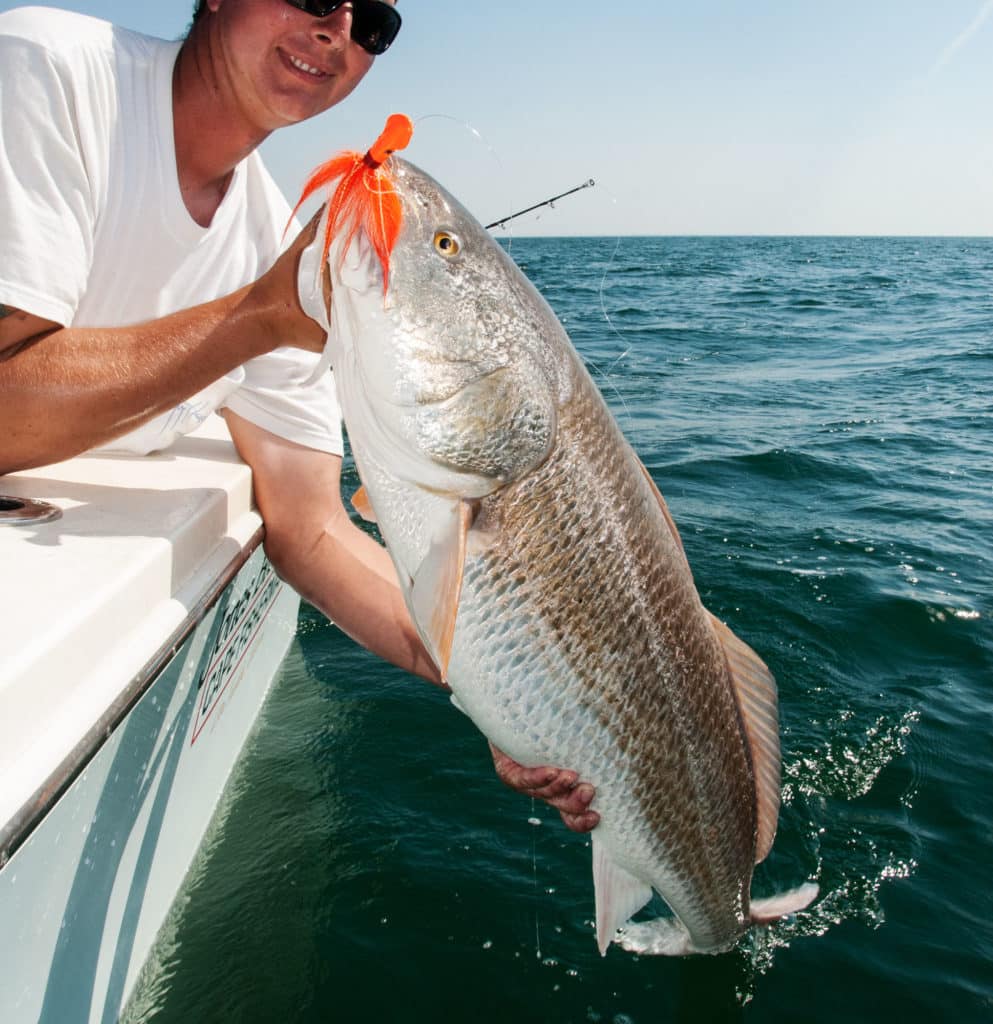
Welcomed Results
While most anglers would consider this kind of action a once-in-a-lifetime experience, the truth is that a long regional moratorium on keeping big red drum has resulted in a population explosion that now makes encounters with huge schools of reds in the lower Chesapeake Bay and along Virginia’s Atlantic coast a frequent occurrence.
The fish are big — many top 50 inches — and they are hungry. In fact, the packs are seemingly in perennial hunt mode, always looking for crabs and baitfish on the surface. When the herd sees a bucktail, competition for the lure is fierce. Usually several members shove and butt others out of the way during contention for the artificial.
Hunting Season
Catching the fish is easy; finding them is the hard part. I’ve found schools almost everywhere in the lower bay and nearshore. The best fishing occurs from late April to early October. A sunny day is most conducive to sightings, and, since a high sun improves visibility, it’s not necessary to get onboard before 8 a.m. Slick-calm conditions make it easier to fish; however, a slight chop on the water is actually better for finding schools lazily surfing down-sea.
Early and late in the season, I focus my energies on the oceanfront off Virginia Beach. From mid-May to mid-August the fish are most likely to show up on the shoals at the mouth of Chesapeake Bay.
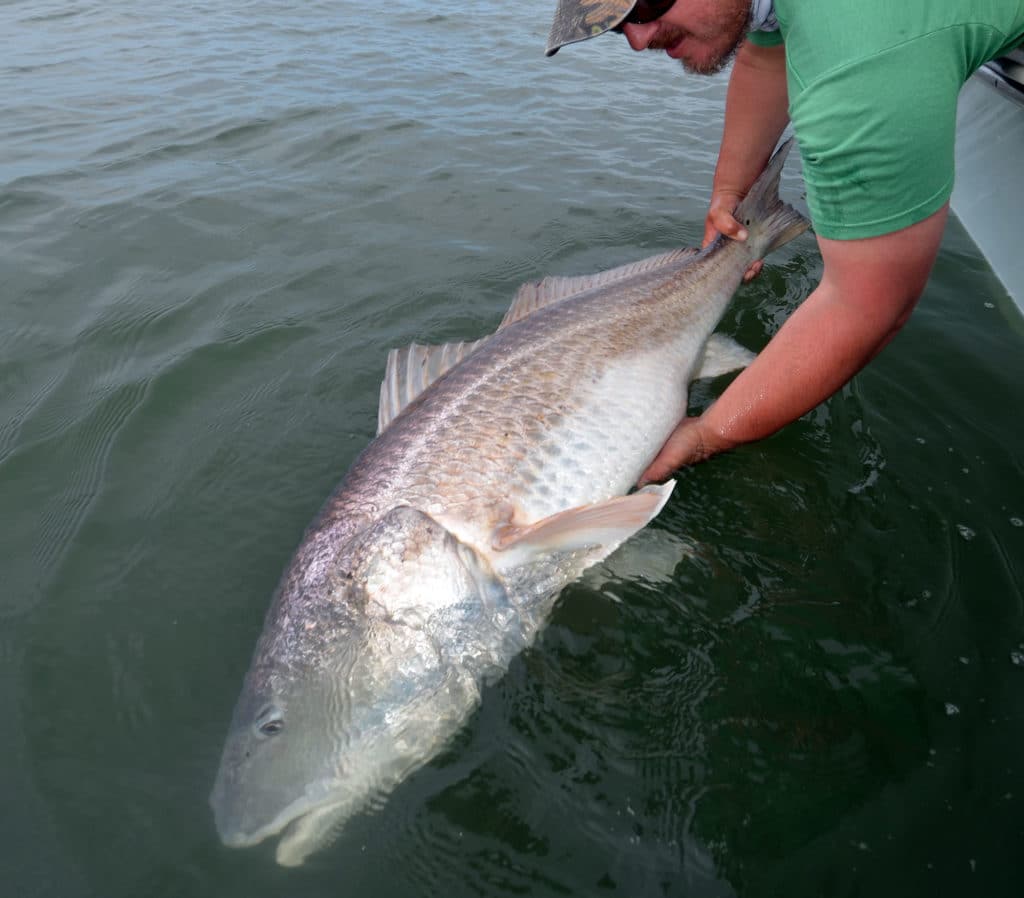
Search and Seizure
The best strategy is to cruise around at 6 knots, scanning the surface for signs of fish in 12 to 50 feet of water. Despite the depth, most of the big reds swim near the top to mow down crabs and baitfish. Once a school is spotted, approach slowly, moving in the same direction and speed as the fish.
Make long casts to avoid spooking the reds. Land the lure ahead of the school, then alternate each crank of the reel handle with a big jerk of the rod. An 8-foot, heavy-action spinning rod and a matching reel spooled with 50-pound braid are good choices. Such an out¬fit lets you shoot the lure with pinpoint accuracy and cuts down the fight time, putting less stress on the fish and ensuring a successful release.
I attach a 12-inch length of 50-pound fluorocarbon leader to the mainline with a slim beauty knot. The business end gets a 3-ounce bucktail tipped with an 8-inch curly tail. Look for bucktails with a good-looking mane and a stout hook (size 9/0 or larger). The heavy head makes it easy to cast into wind, and the extra hair slows the sink to keep the lure in the strike zone. My favorite color combination is a white bucktail with a red tail, but pink and orange are also popular color selections.
Fight the drum quickly and use a heavy dehooker to release the fish with¬out taking it out of the water. Never lose sight of a school and keep a designated lookout if you have to so you can chase the drum for miles.
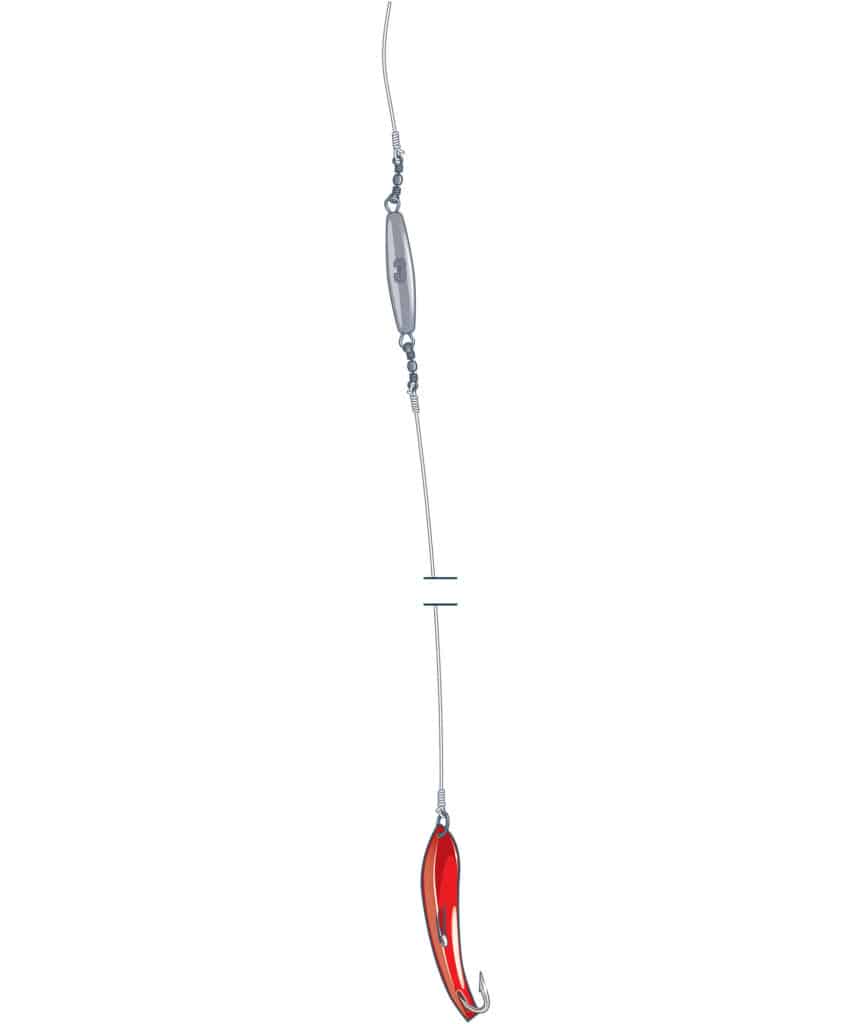
Shoal Pa-Troll
Slow-trolling big swim¬baits and jigs has proven a simple and effective way to locate and catch trophy red drum in Virginia. The discovery happened by chance. An angler sight-fishing the schools left a swimbait out, bouncing on the bottom, and whammo! Fish on.
Old-school drum anglers remind new¬comers that they have been catching reds for years by trolling a 4½ Drone spoon, or a No. 18 or No. 21 Tony Accetta Pet spoon. They tie the spoon to 8 feet of 50-pound fluorocarbon leader, attach a 250-pound snap swivel to the other end of the leader, and clip it to a 2- to 6-ounce in-line sinker. They fish the rig on 50-pound line off a medium-heavy conventional rod and troll it at 2 to 3 knots.
The new technique is easier and simpler. Start with a medium-heavy, 8-foot spinning outfit, 50-pound braid, and a foot of 50-pound fluorocarbon leader. Then tie on a 2-ounce jig tipped with a 6-inch paddle tail or an 8-inch swimbait. A 3-ounce bucktail works in a pinch.
I’ve had good results combining both techniques. I run spoons from my boat’s transom corners, far enough so the sinkers bounce off the bottom, and I pull swim¬baits from rod holders on both gunwales, dropping them back so the lures swim 25 yards behind the spoons as I troll. For best results keep your speed at 2 to 3 knots.
We’ve caught fish slow-trolling along the coast, in the channels, and across flats and shoals. We’ve even pulled the rigs along the Chesapeake Bay Bridge-Tunnel to catch big drum late into the fall. But generally the best bite comes early in the spring behind Virginia’s Barrier Islands.
Catch and Release
When the fish hit, they usually come in packs. So when you get a bite, keep the boat moving forward to score two, three or four more reds. With fish on the line, let the boat idle ahead to keep the lines straight and maintain pressure on the hooked redfish. Nevertheless, anglers must move around the cockpit to follow their respective fish and prevent tangles. Once a hooked fish is close enough, use a landing net with a 36-inch drop to scoop it out of the water.
Bull red drum are the spawners, so spend a few minutes resuscitating each one before you release it. I clip the drum to a lip gripper, then bump the boat ahead slowly, holding the fish in the water until it shows it’s ready to swim off.
The moment we let a fish go, we get right back in the game. With more and more redfish reaching trophy size in southeast Virginia, the number you catch now is usually limited only by the amount of time you dedicate to chasing them.
SWS Planner: Virginia Bull Red Drum
When: Spring through fall
Where: Virginia coast and lower Chesapeake Bay
Who: Boating anglers.
The following guides can improve your chances and help you gain firsthand experience:
Capt. Zach Hoffman
salttreatedfishing.com
757-817-1388
Capt. Ben Shepherd
Above Average Sportfishing
757-621-5094
Capt. Craig Paige
paige2charters.com
757-672-9381
SWS Tackle Box: Virginia Bull Red Drum
Rods: Shimano Terez 8-foot, medium-heavy spinning or equivalent for casting and trolling
Reels: Shimano Stradic 5000 or equivalent for casting and trolling
Line: 50-pound braid
Leaders: 80-pound fluorocarbon
Lures: 41⁄2 Drone spoon; No. 18 or No. 21 Tony Accetta Pet spoon; 6-inch swimbait; 2- to 3-ounce bucktail jig or jig head rigged with a 6-inch paddle tail

Top Lure Picks



